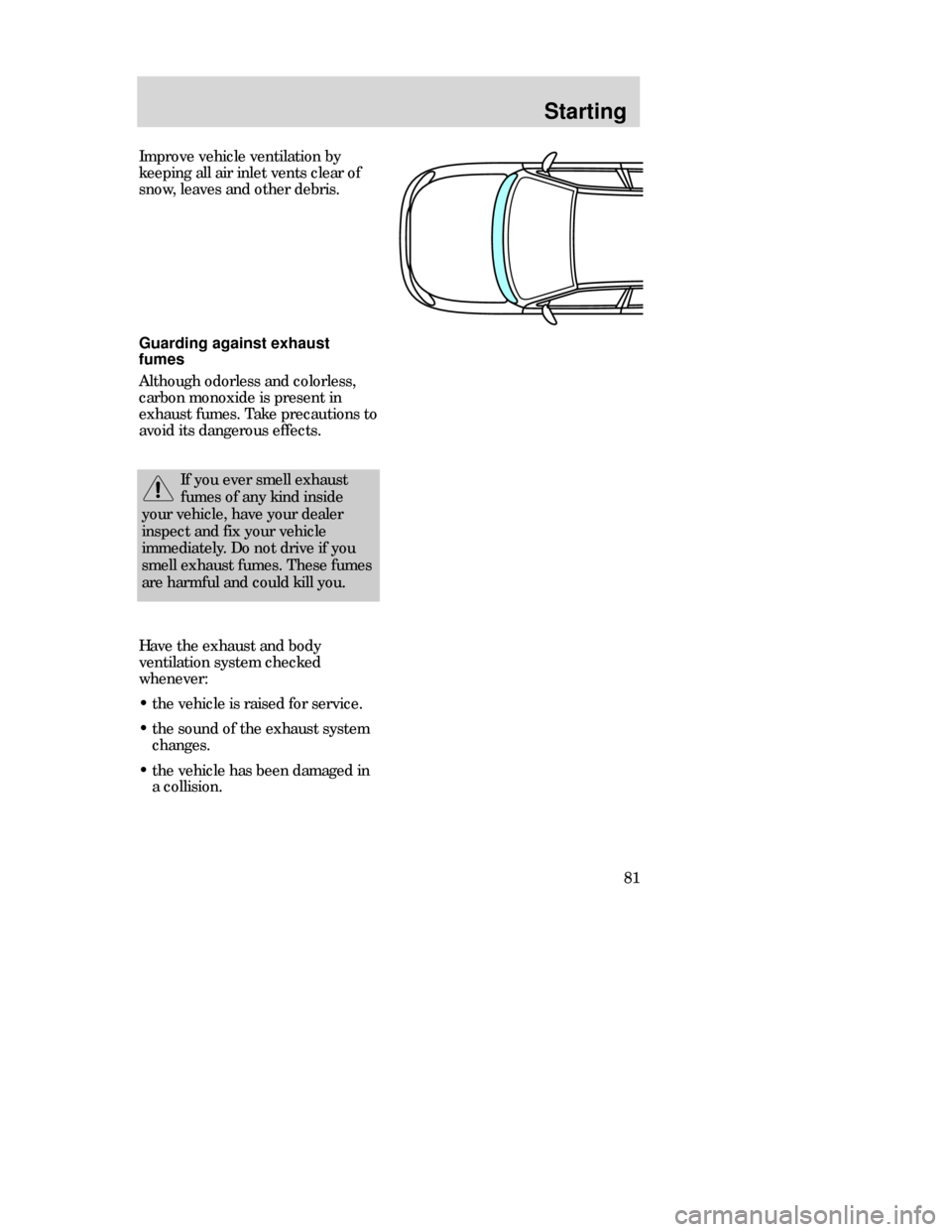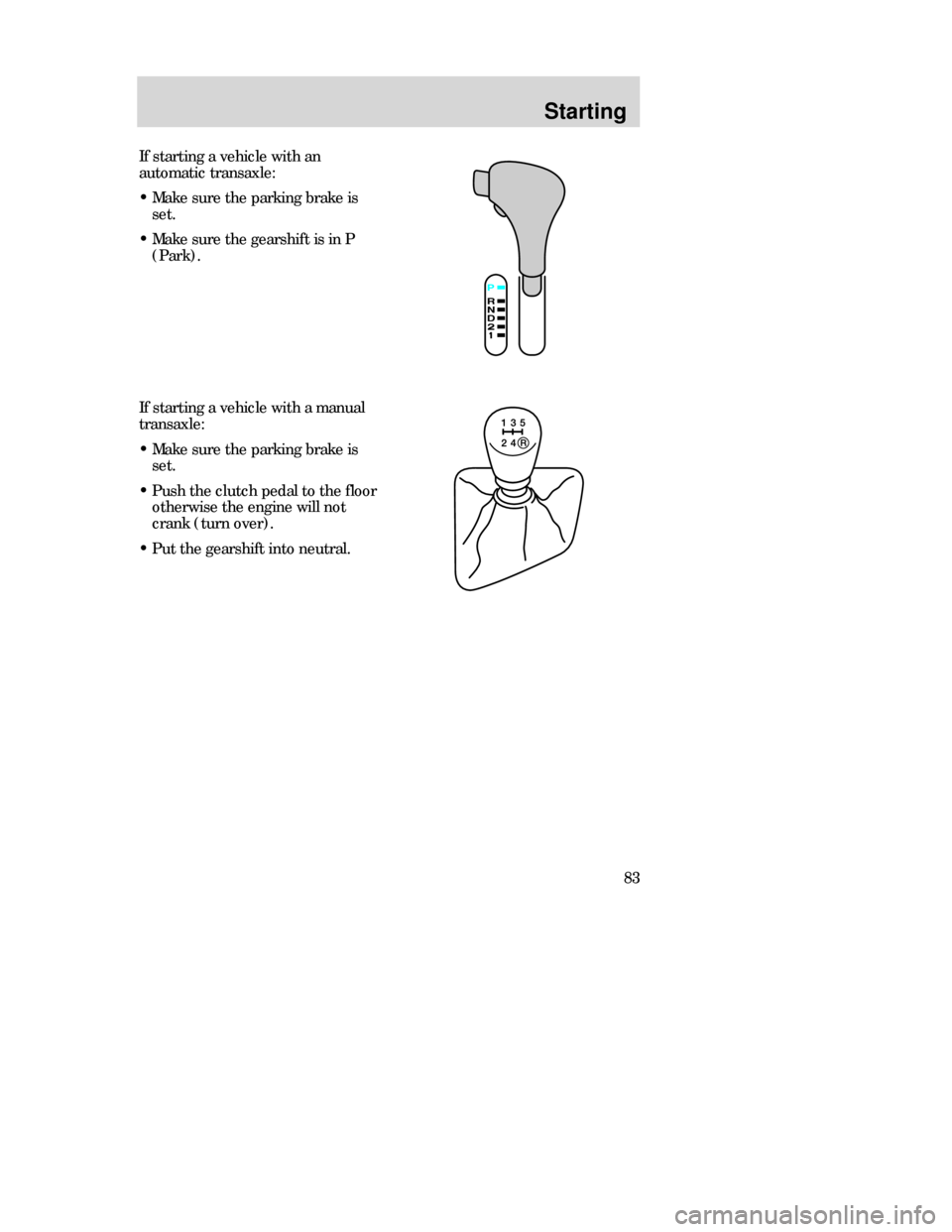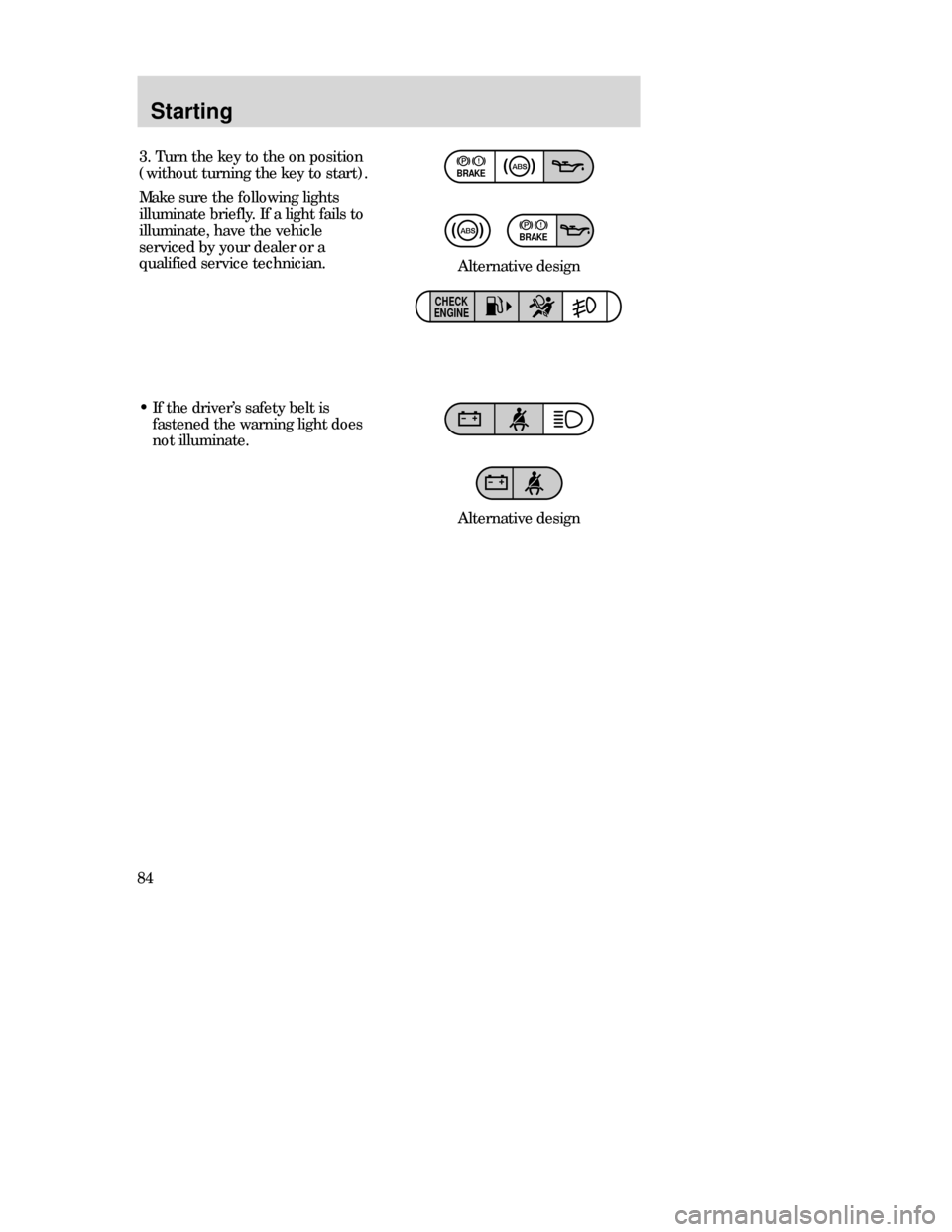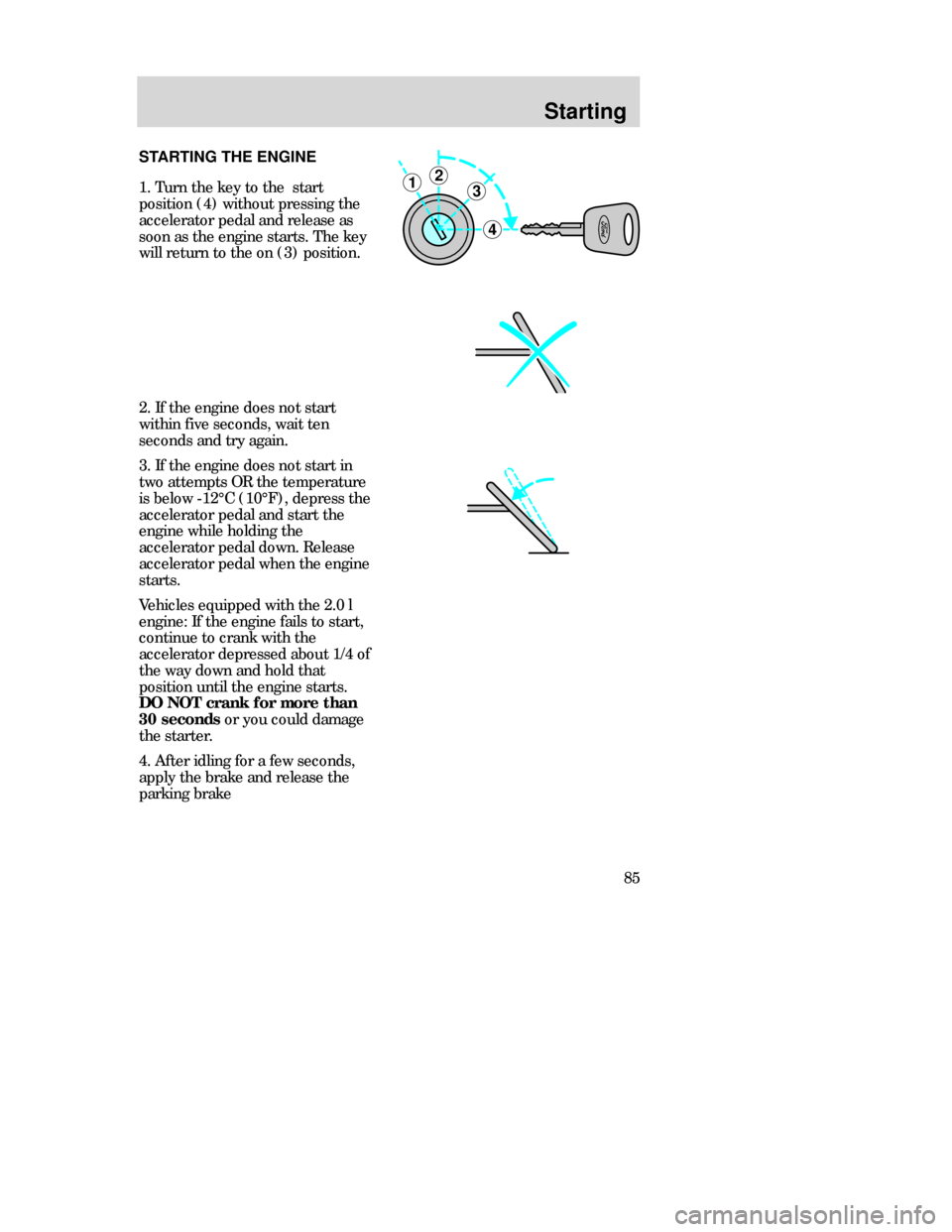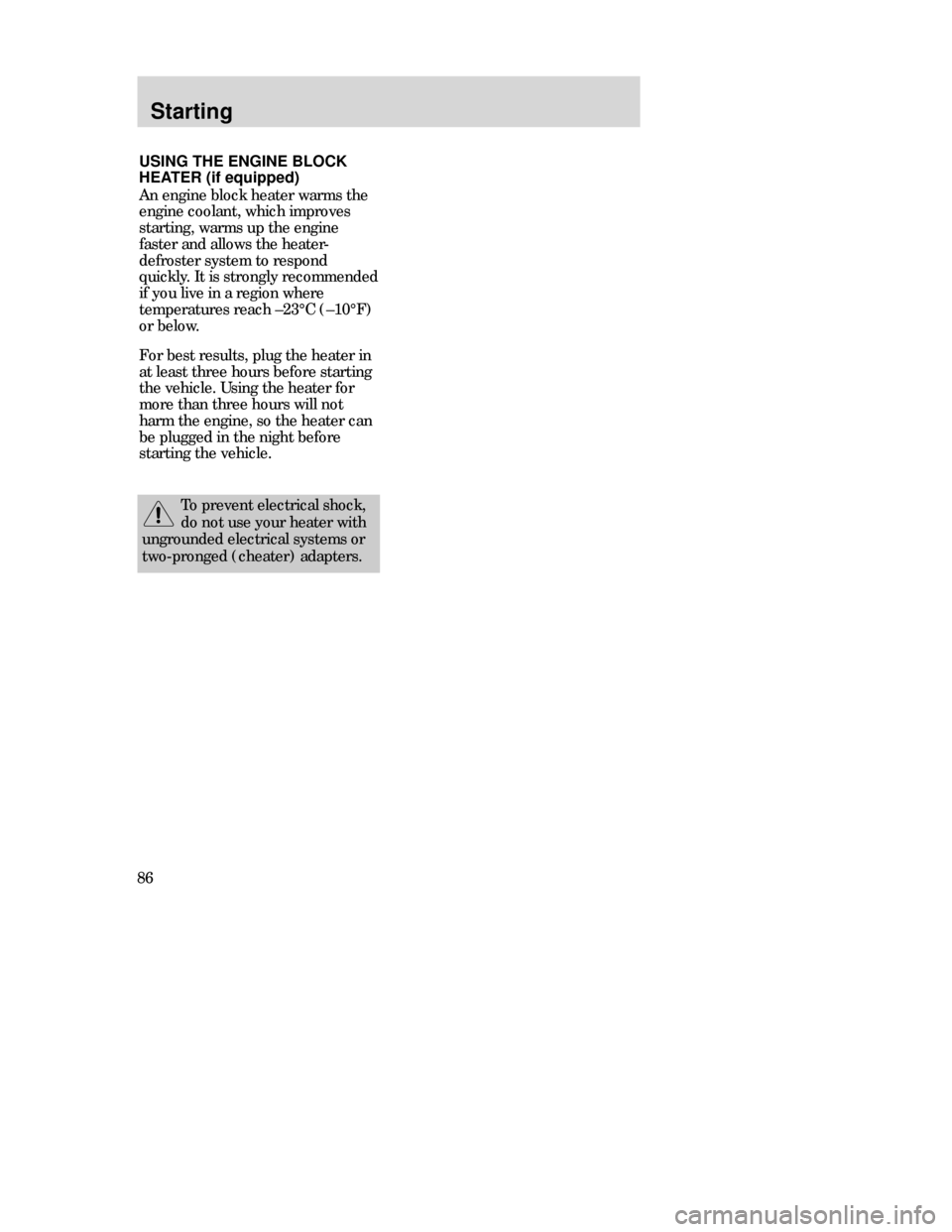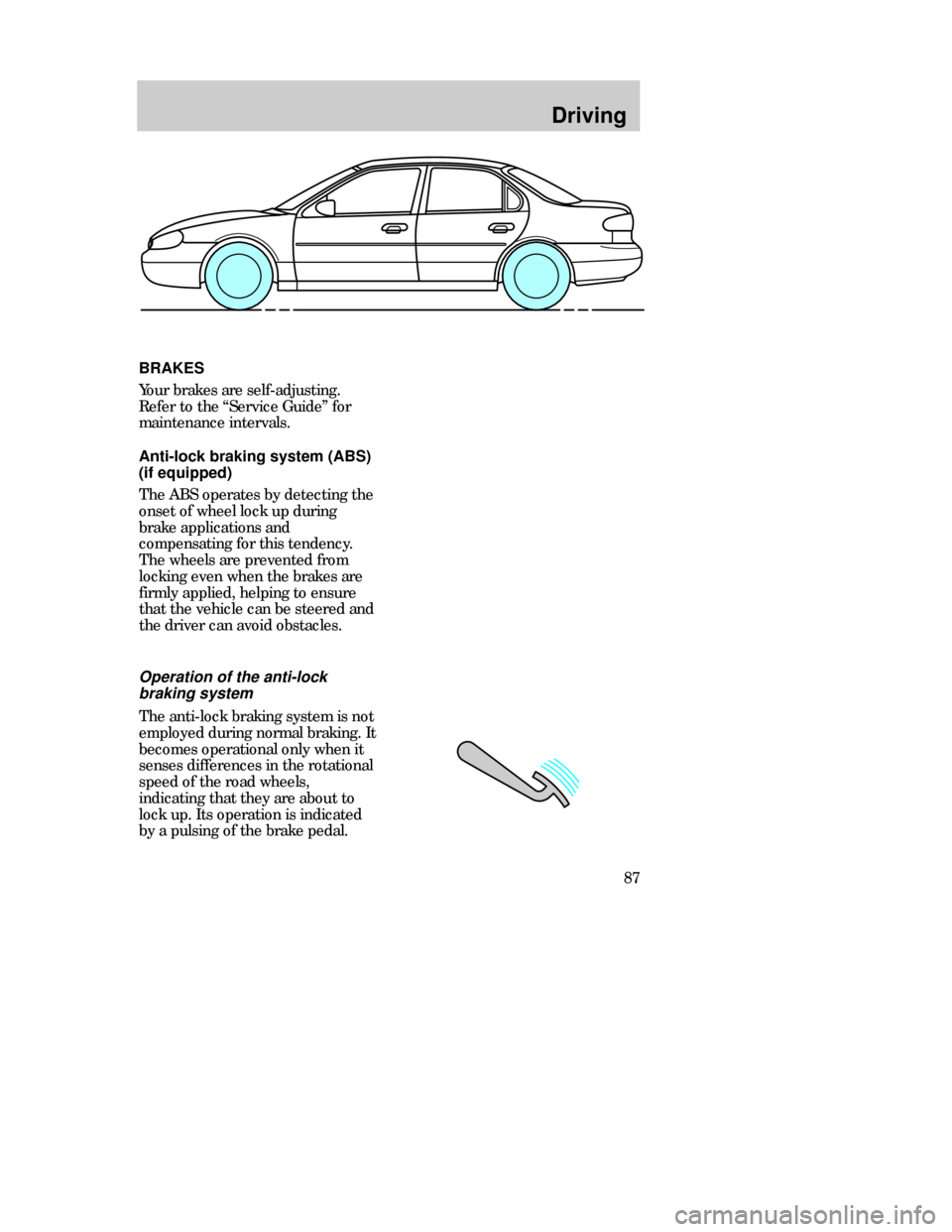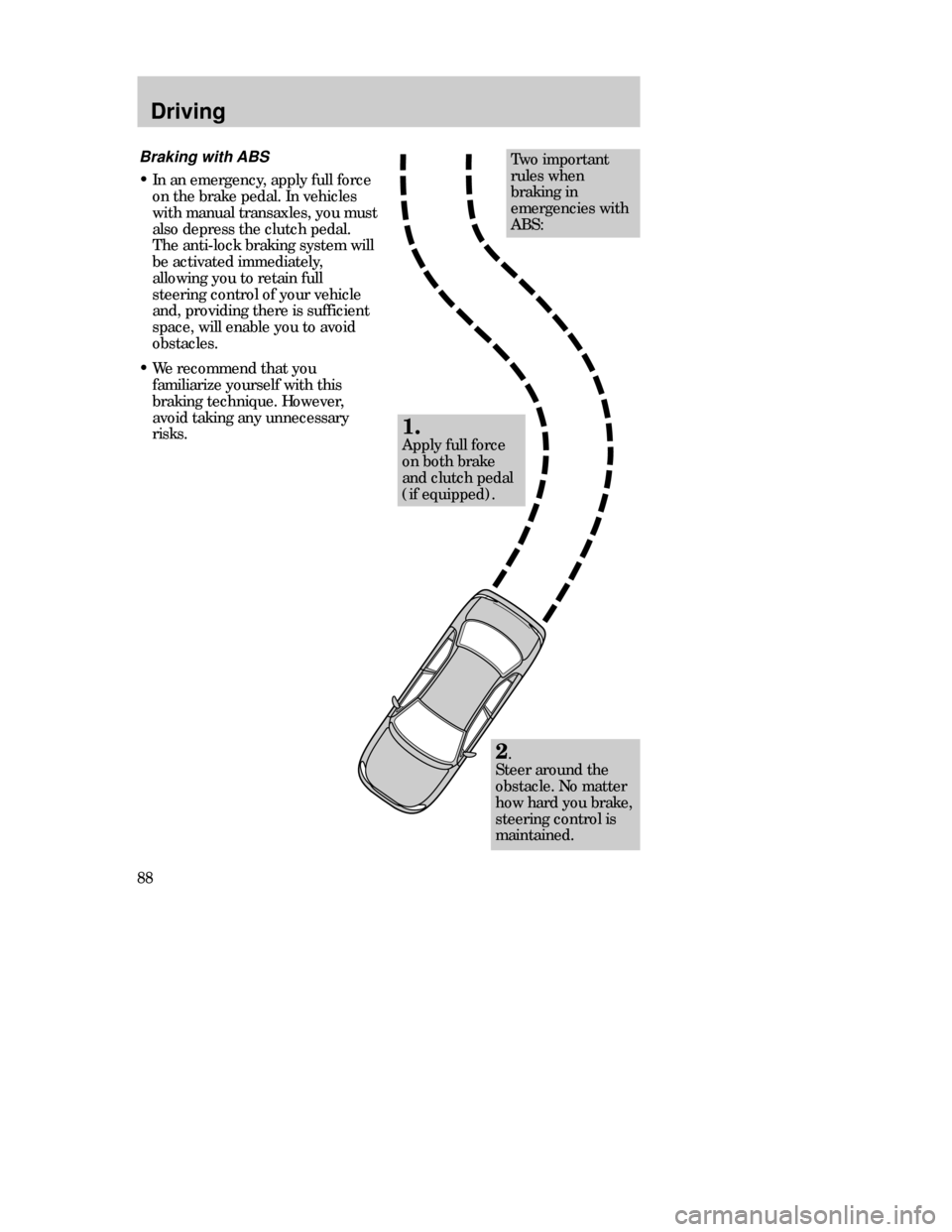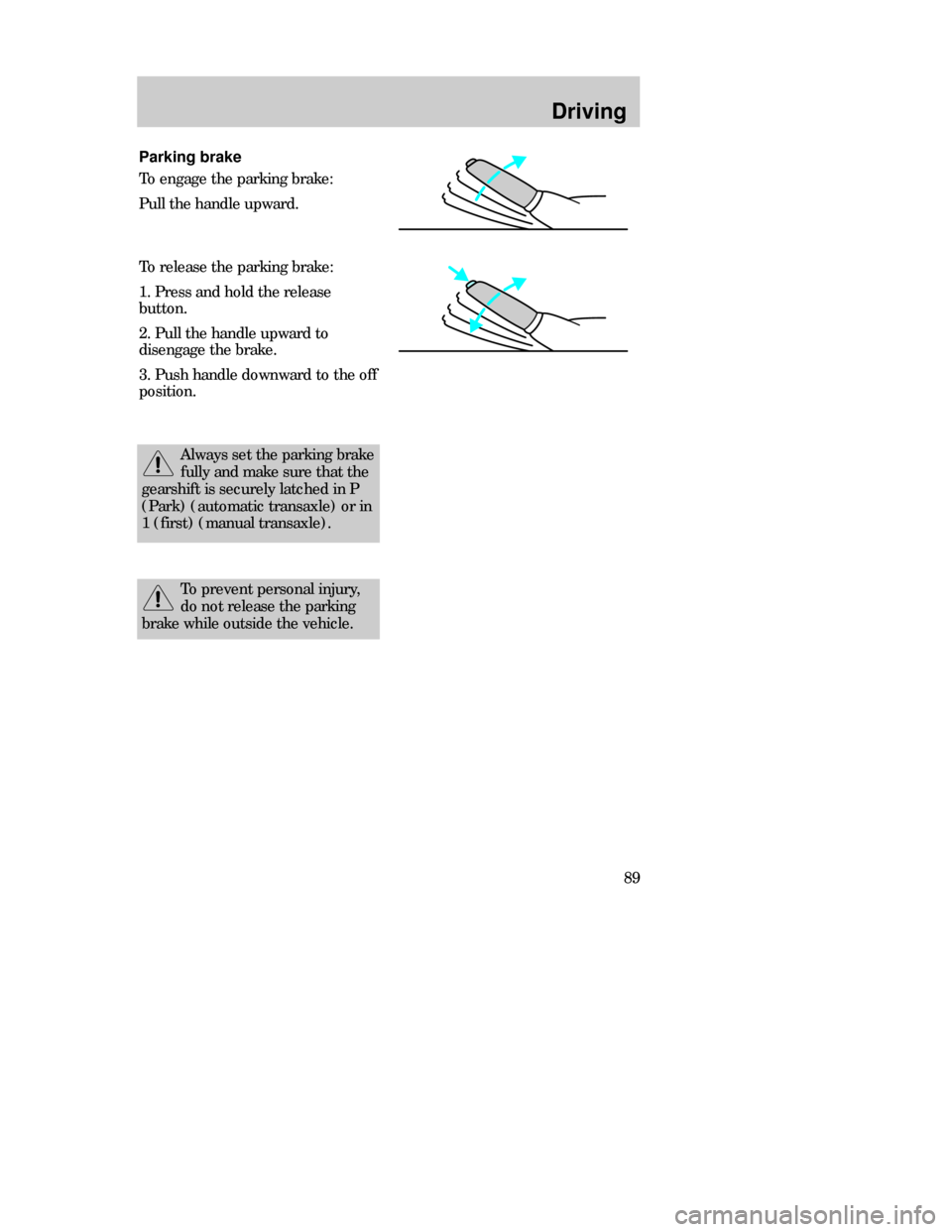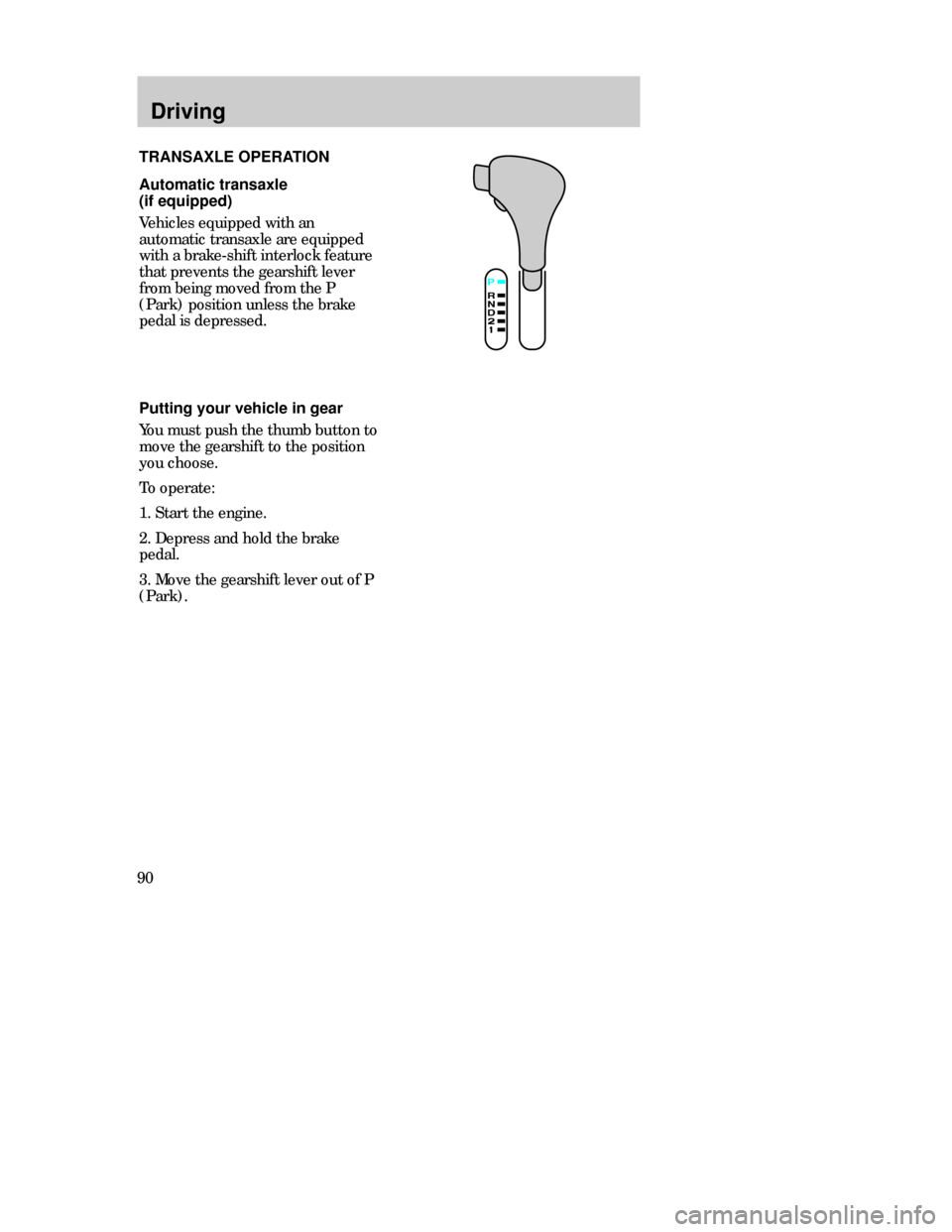FORD CONTOUR 1998 2.G Manual Online
CONTOUR 1998 2.G
FORD
FORD
https://www.carmanualsonline.info/img/11/4767/w960_4767-0.png
FORD CONTOUR 1998 2.G Manual Online
Trending: clutch, clock, oil, rear view mirror, recommended oil, audio, display
Page 81 of 200
Starting
81 Improve vehicle ventilation by
keeping all air inlet vents clear of
snow, leaves and other debris.
Guarding against exhaust
fumes
Although odorless and colorless,
carbon monoxide is present in
exhaust fumes. Take precautions to
avoid its dangerous effects.
Have the exhaust and body
ventilation system checked
whenever:
•the vehicle is raised for service.
•the sound of the exhaust system
changes.
•the vehicle has been damaged in
a collision.
If you ever smell exhaust
fumes of any kind inside
your vehicle, have your dealer
inspect and fix your vehicle
immediately. Do not drive if you
smell exhaust fumes. These fumes
are harmful and could kill you.
CDW IVA1_2 Starting en C 5/15/97 8:50 PM Page 81
Page 82 of 200
Starting
82
PREPARING TO START THE
VEHICLE
Engine starting is controlled by the
spark ignition system. This system
meets all Canadian Interference-
Causing Equipment standard
requirements regulating the
impulse electrical field strength of
radio noise.
When starting a fuel-injected
engine, avoid pressing the
accelerator pedal before or during
starting. Only use the accelerator
pedal when you have difficulty
starting the engine. For more
information on starting the vehicle,
refer to Starting the enginein this
chapter.
Before starting the vehicle:
1. Make sure all vehicle occupants
have buckled their safety belts. For
more information on safety belts
and their proper usage, refer to the
Seating and safety restraints
chapter.
2. Make sure the headlamps and
vehicle accessories are off.
CDW IVA1_2 Starting en C 5/15/97 8:50 PM Page 82
Page 83 of 200
Starting
83 If starting a vehicle with an
automatic transaxle:
•Make sure the parking brake is
set.
•Make sure the gearshift is in P
(Park).
If starting a vehicle with a manual
transaxle:
•Make sure the parking brake is
set.
•Push the clutch pedal to the floor
otherwise the engine will not
crank (turn over).
•Put the gearshift into neutral.
CDW IVA1_2 Starting en C 5/15/97 8:50 PM Page 83
Page 84 of 200
Starting
843. Turn the key to the onposition
(without turning the key to start).
Make sure the following lights
illuminate briefly. If a light fails to
illuminate, have the vehicle
serviced by your dealer or a
qualified service technician.
BRAKE
BRAKE
CHECK
ENGINE
•If the driver’s safety belt is
fastened the warning light does
not illuminate.Alternative design
Alternative design
CDW IVA1_2 Starting en C 5/15/97 8:50 PM Page 84
Page 85 of 200
Starting
85 STARTING THE ENGINE
1. Turn the key to the start
position (4) without pressing the
accelerator pedal and release as
soon as the engine starts. The key
will return to the on (3) position.
3
4
21
2. If the engine does not start
within five seconds, wait ten
seconds and try again.
3. If the engine does not start in
two attempts OR the temperature
is below -12°C (10°F), depress the
accelerator pedal and start the
engine while holding the
accelerator pedal down. Release
accelerator pedal when the engine
starts.
Vehicles equipped with the 2.0 l
engine: If the engine fails to start,
continue to crank with the
accelerator depressed about 1/4 of
the way down and hold that
position until the engine starts.
DONOT crank for more than
30secondsor you could damage
the starter.
4. After idling for a few seconds,
apply the brake and release the
parking brake
CDW IVA1_2 Starting en C 5/15/97 8:50 PM Page 85
Page 86 of 200
Starting
86USING THE ENGINE BLOCK
HEATER(if equipped)
An engine block heater warms the
engine coolant, which improves
starting, warms up the engine
faster and allows the heater-
defroster system to respond
quickly. It is strongly recommended
if you live in a region where
temperatures reach –23°C (–10°F)
or below.
For best results, plug the heater in
at least three hours before starting
the vehicle. Using the heater for
more than three hours will not
harm the engine, so the heater can
be plugged in the night before
starting the vehicle.
To prevent electrical shock,
do not use your heater with
ungrounded electrical systems or
two-pronged (cheater) adapters.
CDW IVA1_2 Starting en C 5/15/97 8:50 PM Page 86
Page 87 of 200
87
Driving
BRAKES
Your brakes are self-adjusting.
Refer to the “Service Guide” for
maintenance intervals.
Anti-lock braking system (ABS)
(if equipped)
The ABS operates by detecting the
onset of wheel lock up during
brake applications and
compensating for this tendency.
The wheels are prevented from
locking even when the brakes are
firmly applied, helping to ensure
that the vehicle can be steered and
the driver can avoid obstacles.
Operation of the anti-lock
braking system
The anti-lock braking system is not
employed during normal braking. It
becomes operational only when it
senses differences in the rotational
speed of the road wheels,
indicating that they are about to
lock up. Its operation is indicated
by a pulsing of the brake pedal.
CDW IVA1_2 Starting en C 5/15/97 8:50 PM Page 87
Page 88 of 200
88
Two important
rules when
braking in
emergencies with
ABS:
1.
Apply full force
on both brake
and clutch pedal
(if equipped).
Braking with ABS
•In an emergency, apply full force
on the brake pedal. In vehicles
with manual transaxles, you must
also depress the clutch pedal.
The anti-lock braking system will
be activated immediately,
allowing you to retain full
steering control of your vehicle
and, providing there is sufficient
space, will enable you to avoid
obstacles.
•We recommend that you
familiarize yourself with this
braking technique. However,
avoid taking any unnecessary
risks.
2.
Steer around the
obstacle. No matter
how hard you brake,
steering control is
maintained.
Driving
CDW IVB1-10Driving en C 5/15/97 8:52 PM Page 88
Page 89 of 200
Driving
89 Parking brake
To engage the parking brake:
Pull the handle upward.
To release the parking brake:
1. Press and hold the release
button.
2. Pull the handle upward to
disengage the brake.
3. Push handle downward to the off
position.
Always set the parking brake
fully and make sure that the
gearshift is securely latched in P
(Park) (automatic transaxle) or in
1 (first) (manual transaxle).
To prevent personal injury,
do not release the parking
brake while outside the vehicle.
CDW IVB1-10Driving en C 5/15/97 8:52 PM Page 89
Page 90 of 200
Driving
90Automatic transaxle
(if equipped)
Vehicles equipped with an
automatic transaxle are equipped
with a brake-shift interlock feature
that prevents the gearshift lever
from being moved from the P
(Park) position unless the brake
pedal is depressed.
TRANSAXLE OPERATION
Putting your vehicle in gear
You must push the thumb button to
move the gearshift to the position
you choose.
To operate:
1. Start the engine.
2. Depress and hold the brake
pedal.
3. Move the gearshift lever out of P
(Park).
CDW IVB1-10Driving en C 5/15/97 8:52 PM Page 90
Trending: tow, oil change, oil filter, oil type, washer fluid, OBD port, height
